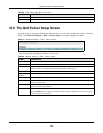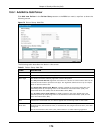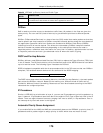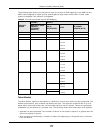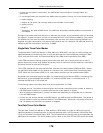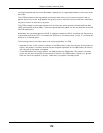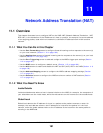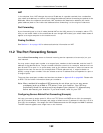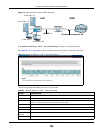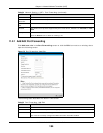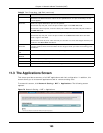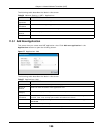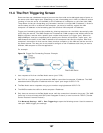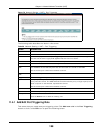
VMG5313-B10A/-B30A Series User’s Guide
181
CHAPTER 11
Network Address Translation (NAT)
11.1 Overview
This chapter discusses how to configure NAT on the VMG. NAT (Network Address Translation - NAT,
RFC 1631) is the translation of the IP address of a host in a packet, for example, the source address
of an outgoing packet, used within one network to a different IP address known within another
network.
11.1.1 What You Can Do in this Chapter
•Use the Port Forwarding screen to configure forward incoming service requests to the server(s)
on your local network (Section 11.2 on page 182).
•Use the Applications screen to forward incoming service requests to the server(s) on your local
network (Section 11.3 on page 185).
•Use the Port Triggering screen to add and configure the VMG’s trigger port settings (Section
11.4 on page 187).
•Use the DMZ screen to configure a default server (Section 11.5 on page 189).
•Use the ALG screen to enable and disable the NAT and SIP (VoIP) ALG in the VMG (Section 11.6
on page 190).
•Use the Address Mapping screen to configure the VMG's address mapping settings (Section
11.7 on page 191).
•Use the Sessions screen to configure the VMG's maximum number of NAT sessions (Section
11.7 on page 191).
11.1.2 What You Need To Know
Inside/Outside
Inside/outside denotes where a host is located relative to the VMG, for example, the computers of
your subscribers are the inside hosts, while the web servers on the Internet are the outside hosts.
Global/Local
Global/local denotes the IP address of a host in a packet as the packet traverses a router, for
example, the local address refers to the IP address of a host when the packet is in the local
network, while the global address refers to the IP address of the host when the same packet is
traveling in the WAN side.



